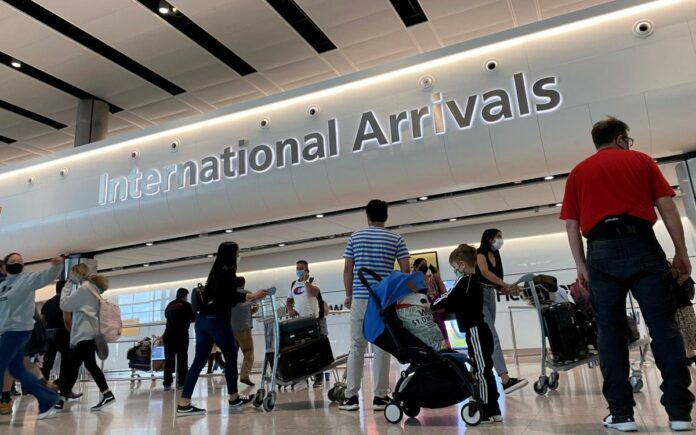The figures have landed. According to Office for National Statistics (ONS), annual net migration in 2022 was a record 606,000 – more than twice the post-2010, pre-Brexit average. This is a huge number, equivalent to adding two cities the size of Newcastle to the UK in just a single year. The implications for public services, infrastructure and housing, particularly in London and the south-east, are massive.
It is true that the figure is less than we at the Centre for Policy Studies – and experts at the Home Office – were anticipating. A consensus had emerged that numbers would be at least 700,000 and perhaps much higher, depending on emigration trends. But the lower than expected figure reflects less a change in migration, and more a series of revisions to the methodology used by the ONS. These revisions actually leave estimates of net migration over the last few years substantially higher.
The first thing to note is that it’s not just the numbers from 2022 that have been affected. The ONS also revised its historical estimates going back to 2018. This means that we now know that in the year ending June 2022, net migration was 102,000 more than predicted – 606,000 rather than 504,000. For the 12 months before, the figure was 59,000 higher. For 2019-20, 60,000 higher. But then the figure for the period before that has been downgraded substantially.
Some of this is due to the fact that the ONS is including asylum applicants in the statistics for the first time. This makes sense, because as things currently stand, most will end up settling here long-term. That might change if and when the Rwanda scheme is up and running, and people who enter the UK illegally can be relocated. But until then, it makes sense to include people who are likely to remain permanently, adding to pressures on housing and public services.
There has also been a big change in terms of the numbers arriving from Ukraine. When the ONS published net migration figures last November, they ‘assumed all those arriving on the Ukraine visa schemes would remain in the UK long-term’. This assumption has now changed, based on ‘internal Home Office analysis’. As a result, 39,000 Ukrainians have been removed from the long-term immigration figures, leaving just 114,000 Ukrainians in the 2022 stats.
But another big change illustrates just how tricky this whole field is. In the past, the ONS assumed that all individuals with a visa lasting at least 12 months counted as long-term immigrants. However, some of those – 17 per cent in the years between June 2018 and June 2020 – ended up leaving early. So in the edition of the data published six months ago, the ONS adjusted the comparable figures accordingly, applying a 17 per cent haircut. In the latest data, the ONS have further refined their approach, and as a result, have taken 143,000 people out of the data for 2022.
Inevitably, there will be accusations that the figures are being fiddled. We completely disagree. Many of the changes, especially for non-EU migrants, reflect the ongoing shift towards using better data to keep track of who is entering and exiting the country. In practice, that means working out how to connect lots of isolated data silos across different Government departments and using these datasets to create a clearer picture of migration.
But there is another key point. Pro-immigration voices are already taking a victory lap off the back of the latest data, trashing our estimates and proclaiming that the data proves immigration is nothing to worry about. On the contrary. The figures actually show that net migration between June 2021 and June 2022 was not 504,000 – a record by any standards – but 606,000. In other words, the ONS’s new data shows that recent immigration has been even higher, for even longer, than we thought.
This makes obvious sense. Last year the UK issued a record number of visas – 622,000 for study and 394,000 for work, up by 44% and 89% respectively on 2021. Newer Home Office data shows a 30% increase in visas granted in Q1 2023 compared to Q1 2022. What kept the net migration figures from being even higher was that emigration ran at near record levels (557,000) in 2022, based on Home Office border data. This has been attributed to non-EU students leaving at the end of their courses – though this seems at odds with the significant rise in visa extensions granted in 2022, to over 560,000.
As the Government has recognised, there are many advantages to net migration – not least in keeping the NHS afloat. But as it has also recognised, the numbers are much, much higher than they have historically been, and the pressures on public services and housing more acute. Ministers still need to take back control.
Broaden your horizons with award-winning British journalism. Try The Telegraph free for 1 month, then enjoy 1 year for just $9 with our US-exclusive offer.


